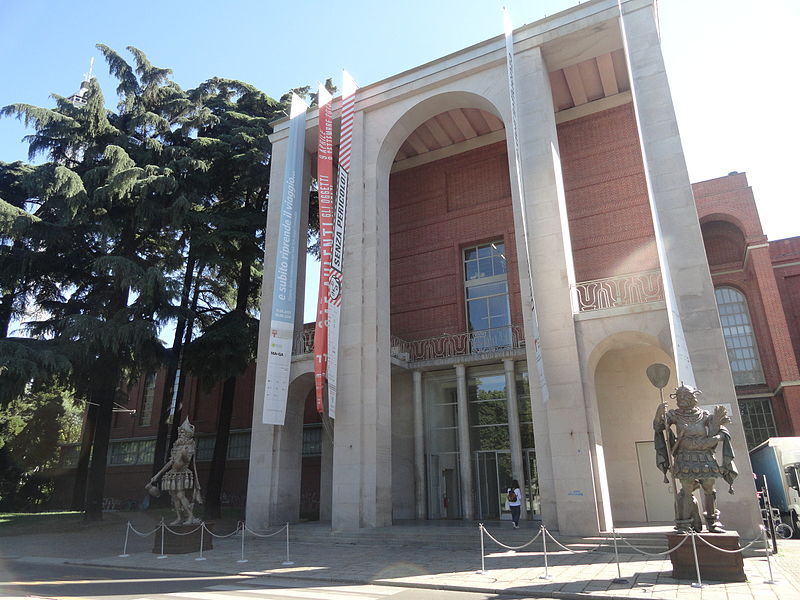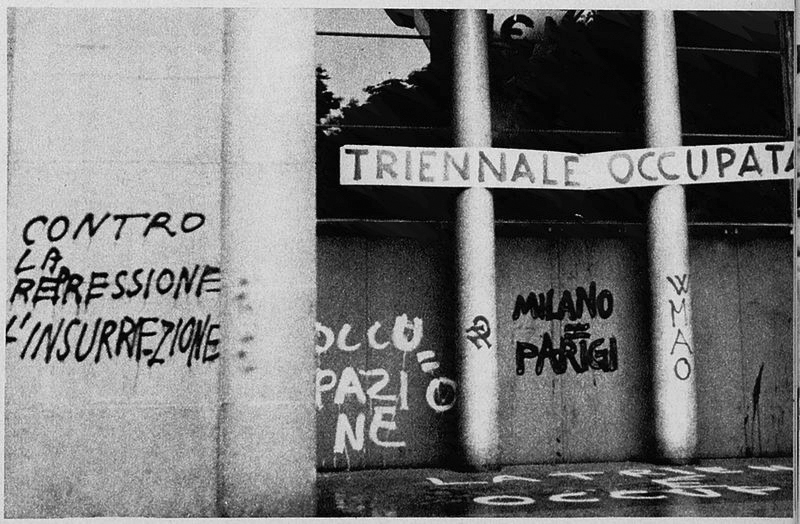Opened for the Triennale of 1933, the Palazzo dell’Arte designed by Giovanni Muzio (1893- 1982) represents a new European model of exhibition space. Flexible and open like a large industrial building lit by large skylights, the Triennale di Milano has been the center of the most advanced experimentation of Italian culture, architecture and design, offering at least five generations the chance to produce and exhibit research, works and products of national and international creativity.
Also known as the Palazzo della Triennale, this facility has been a true laboratory of modernity in Italy, because since its founding the applied arts and industry have engaged in an active confrontation here, defining an innovative cultural, economic and social system in which the motto “from the spoon to the city” has been shaped in keeping with the human scale and an idea of widespread quality of public and domestic life.
In the first two Milanese editions of the Triennale (1933 and 1936) the Palazzo dell’Arte played host to the most advanced and sophisticated fringes of Italian rationalism, represented above all by certain temporary pavilions in Parco Sempione such as the “House with a steel structure” by Albini, Pagano, Camus, Palanti, Mazzoleni and Minoletti, the “Villa studio” by Figini & Pollini, the “home for young newlyweds” by BBPR and Portaluppi, and several fundamental exhibitions for the modern history of architecture, including the show on Italian rural architecture curated by Pagano and Daniel.
The postwar reconstruction assigned a central role to the Triennale, thanks to the 8th exhibition in 1947 on housing and the QT8 (Quartiere Triennale 8) project with a master plan by Bottoni. The impact of the institution went far beyond its walls, confirming its crucial cultural importance.
The decade of the 1950s was the period of the success of the “New Italian Design” and of the economic boom that further reinforced the link between new design, advanced industry and architectural culture. The Triennale exhibitions of this period were also connected with a series of major public events that led to the birth of the Association of Industrial Design (ADI) and the “Compasso d’Oro” award. In the 1950s and 1960s Parco Sempione continued to function as an advanced laboratory, with projects by: Buckminster Fuller, BBPR and Steinberg, Rossi and Meda, De Chirico, Parisi, Longhi & Antonietti and Griffini.
With the 14th Triennale curated by Giancarlo De Carlo in 1968, and never opened due to a protest occupation of the facility, and the next edition that launched the period of the Tendenza, we see the two exhibitions that conclude the long episode of the Triennale as a product of the Modern, after which the building and its management enter a more fragmentary phase.
Towards the end of the 1990s, on the other hand, there is a progressive and radical rethinking of the spaces, starting with a project for the entrance and certain service spaces by Umberto Riva, and the project by Gae Aulenti for the main gallery. This works usher in a period of reform of the Palazzo by Muzio, thanks to the project by Michele De Lucchi who redesigned the interiors, the reopening of the connection with the adjacent Teatro dell’Arte and the bridge in structural bamboo connecting the first floor to the new Museum of Design. The approach of Expo 2015 accompanies the latest phase of the reorganization, thanks to a project by Italo Rota and the reopening of the restaurant on the roof of the building.

